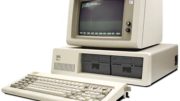Everyone knows about Chromebooks. Even if you don’t have a kid in school, you probably know how popular they are in education. They’ve become the go-to device for someone who needs basic computing power without a hefty price. And honestly, considering what you can get for under $200, they are pretty impressive.
They’ve been around a lot longer than you realize
The Chromebook concept started in 2011 when Google announced that it had built an entire operating system around Google Docs and the Chrome browser. The idea was that you could get a whole computer that worked decently without having to pay a king’s ransom for a Microsoft Windows license.
Chromebooks weren’t really a runaway success, though. For most of the last decade, they were certified failures. Back in the early days of 2014 I was already calling the Chromebook dead on arrival, saying that any sales figures reported by hardware manufacturers were due to “palettes of unsold Chromebooks.” In other words, retailers may have been buying them but they weren’t selling them.
Chromebooks should have been a runaway success. They came at a time where regular PCs were getting too expensive and complicated for most folks. Chromebooks offered a simple, no-nonsense way to get what you wanted without spending a lot of time on updates. They hardly ever suffered from any sort of malware. As the platform became more mature, they offered nifty features like web apps and the ability to run apps designed for Android.
So what held the Chromebooks back?
iPads.
All the way back in 2009, we all believed the future of computing was a cheap laptop that would cost under $300 and provide a decent, if not wonderful, computing experience. And then, iPad. With the tablet space shrinking as phones get bigger, it’s hard to remember how much of a tidal wave iPads were. The first generation was a total turkey with a slow processor and practically no apps designed for the large screen, and it was still an instant sensation. Over the years as the line has expanded, it took all the breath out of the mini-laptop movement. Apple has been relentless. As people complained the iPad was too expensive, they introduced cheaper models. As people complained it wasn’t capable, they added more features.
Windows.
The big reason Chromebooks were invented in the first place was that Microsoft was charging up to $129 per computer just for the operating system. This made a cheap laptop basically impossible. Well, Microsoft sharpened up. They started with the “Starter Edition,” a crippled version of Windows 7 that they gave to manufacturers for free, and then proceeded to give away Windows 8 licenses to pretty much anyone who made a device with a screen smaller than eleven inches. They created “Windows 10 S,” which makes administering these devices easier. Recently, they’ve been developing a cloud-based version of Windows that should compete very well with Chromebooks. Microsoft is a big company and they proved they’re willing to take a loss in order to crush the competition.
And most of all…
Chromebooks failed in the marketplace for years because honestly there was practically nothing fun to do with them. People use phones, tablets, or laptops for work, but they also want to use them on their downtime while traveling. Being able to add Android apps solved that problem, and it’s finally gotten to the point after 11 years that I enjoy having a Chromebook. I even recommend them to friends and readers.
So, all I can say is if those palettes of unsold Chromebooks are still there 8 years later, they must be getting pretty big. I’m betting they aren’t, though.





